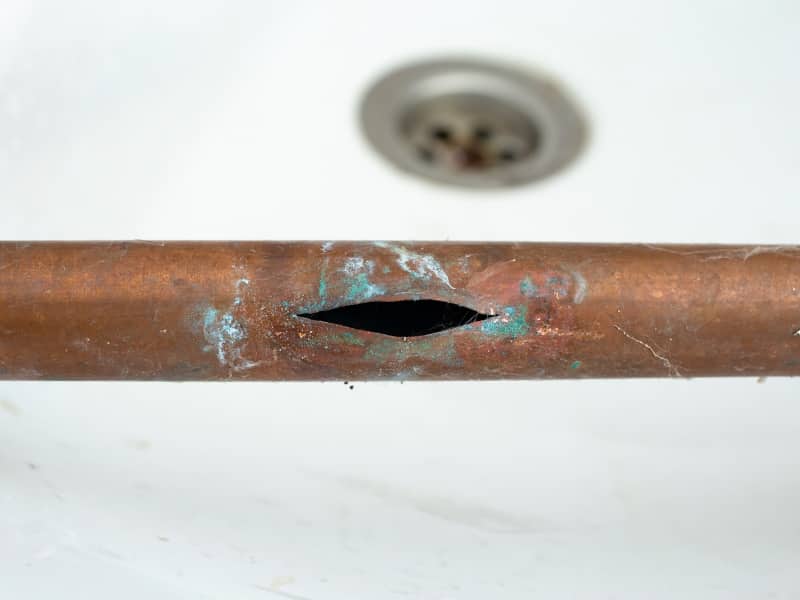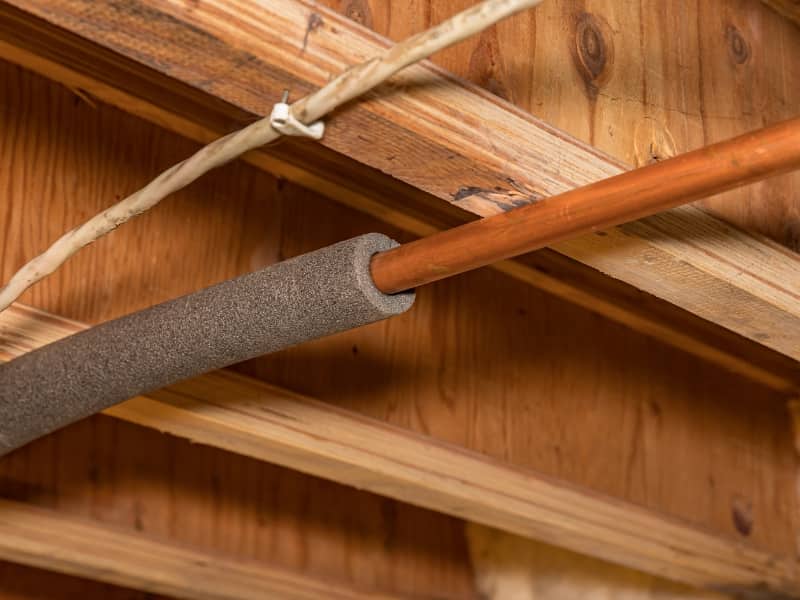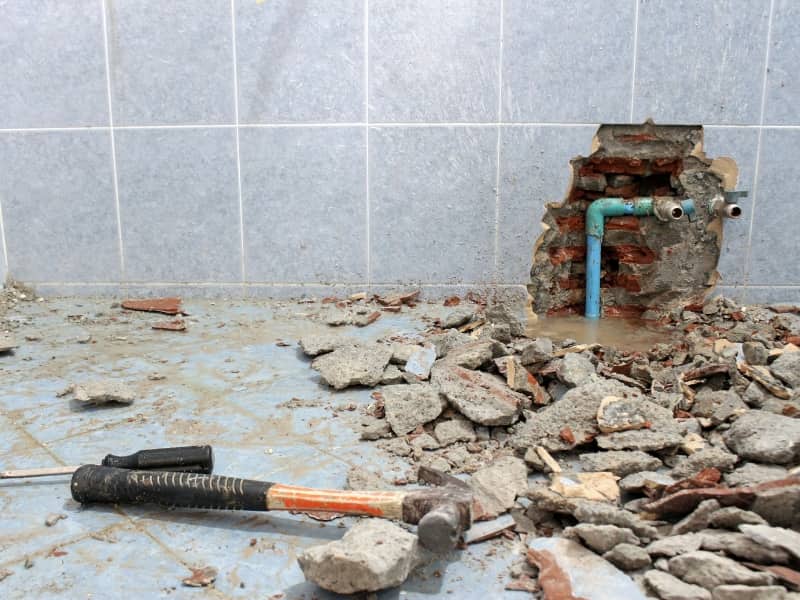Smashing through plasterboard feels great when your fresh home renovation is underway, but the real work starts once the dust settles and the pipes come into view. Tuck those pipes away badly, and you’re going to get leaks, low pressure, and wallpaper that peels.
To help you out, we’ve broken down some of the top DIY plumbing potholes we come across when people turn lofts into offices or garages into gyms. Dodge them now, and you’ll save a soggy phone call later. A top-notch home renovation lives or dies on water staying in the pipe, not in the plasterboard.
Underestimating Water Pressure
Swap a tired mixer tap for a rainfall head without checking the mains, and you’ll end up with a dribble that can’t rinse shampoo. Go the other way, and unchecked pressure will be way too high and could trigger burst pipes.
Try using a gauge before you buy shiny brassware. Anything above five bars deserves a pressure-reducing valve; anything under one bar could well need a booster pump. Five minutes with a gauge beats ripping out fresh tiling any day of the week.
Picking the Wrong Pipe Size
Long runs to an island sink look harmless on paper, but friction can damage your water flow. Use 15 mm, where 22 mm was needed, and you’ll watch the tap dribble while someone showers upstairs. Oversize early, clip at the right centres, and fit service valves on both ends. Getting the right pipe size keeps velocity down, stops water hammering, and goes a long way to keeping your boiler out of the red.

Ignoring Vent Pipes and Traps
If you move a toilet across the floor and forget about the vent, you’re probably going to have foul air burping through plugholes. Every trap needs a vent or an AAV. Route a pipe up into the loft if you can, or fit a mini-vent under the basin. It stops syphon action and keeps stink at bay. Mark joists first, drill the centre third, and never notch the bottom chord. If you’re not confident, though, it’s always better to contact a professional.
Forgetting Isolation Valves
The excitement of a fresh layout often means feeds are buried without shut-offs. A humble quarter-turn valve costs pennies and lets future repairs stay local rather than turning the street valve or resulting in burst pipes. Fit them where you can reach, label them hot and cold, and give each handle a flick before boxing in. Good isolation turns a flood into a quick towel job.
Skipping a Proper Pressure Test
Some people fill their system with air, assume no hiss equals no leak, and get tiling. The problem is that air slips through gaps that are too small for water. To be 100% sure, you can try pumping the system, pump it to 1.5 times the working pressure, and watch the gauge for fifteen minutes.
Any drop means that it’s probably best to locate the joint now, not later on. Spotting hidden plumbing issues at this stage is cheaper than replacing swollen skirting boards later.
Misplacing Wastes for Freestanding Fixtures
A freestanding bath in the middle of the room looks great until you realise the waste pipe is now trapped under fresh concrete. Always start your layout from the main soil pipe (the big one that carries everything outside) and work backwards.
Give the waste pipe a gentle slope of roughly 20 mm per metre so water drains away, clip it every 75 cm to stop it sagging, and use smooth-curve fittings instead of sharp elbows. Leave the pipe ends a bit long until the final fix so you can trim them after you know the exact floor height.
Leaving Pipes Unlagged in Cold Pockets
Loft rooms and garages tend to get much colder than the rest of your house, especially in winter. If your pipes run through these areas without the right insulation, they’re quite likely to freeze and split when the temperature drops, putting you in classic burst pipe territory. Wrap them in foam pipe lagging, tape up the joins, and make a note of where the pipes run. That way, if anyone drills into the ceiling later (for spotlights, for example), they won’t get a surprise leak.

Need to Fix What DIY Plumbing Can’t Manage?
At ECS Plumbing & Heating, we’re a family-run team that specialises in putting right the plumbing issues above, from mystery drips in extensions to full central heating redesigns. All our engineers are Gas Safe and give you the information you need in plain English.
If your own DIY plumbing needs something extra, or you’d rather hand the spanners to someone who does this for a living, book one of our engineers today. Give us a ring on 01420 571000, or send us a photo through WhatsApp, and we’ll point you in the right direction. Booking is simple, response time is rapid, and our pricing is transparent.
FAQs
How can I measure my home’s water pressure without a special kit?
A cheap screw-on gauge from a DIY shop fits the garden tap and gives a quick bar reading with no pro tools needed.
Do small plumbing tweaks still need Building Control sign-off?
If you’re altering drainage routes or adding a new WC, most councils want to inspect. Always get in touch with them first to be safe.
Is copper better than PEX for hidden pipe runs?
Both work well; copper is rigid and fire-resistant, while PEX is flexible and quick. The key is correct sizing and secure clipping.
How often should isolation valves be exercised?
Turn them off and on twice a year to stop scale from building up and handle seizing when you need them most.



